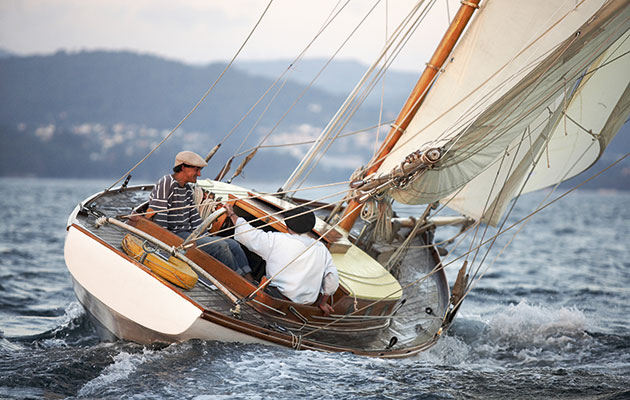The trouble with engines
Entertaining though the spectacle had been for the spectators, it said nothing for my ability to handle the ship, so what had gone wrong? Auxiliary engines make us lazy, but that was no excuse. And this, with hindsight was how the thing should have been done:
The head of the creek was scarcely a boat’s length wide. The commanding breeze was blowing straight down the first section of the creek, which then curved to port, recurved to starboard, then port again and so on as far as Brightlingsea, where there would be room to manoeuvre. In short a run, a reach, a run, a reach. Nothing on the wind.
If you forget about the engine you work as though it is not there. So instead of hoisting the main and casting off head to wind, thus pointing up the creek, where there was no chance at all of bearing away in the available space – for under main alone she will never pay off – I should first have warped the boat round to lie stern to wind. Something to be done quietly with no fuss or hurry, just let her swing.

The author Martin O’Scannall. Photo Oscar companioni
Next, whilst the mainsail should be ready to be hoisted, with perhaps one tie to keep the sail tidy, and having made sure all runs clear, you leave it alone. Instead you unroll the foresail, but let the sheet run, so it is barely drawing. Now release your bow line, which will have been run round a post on the quay and brought back aboard, and tidy it away.
You are now secured only by the after warp, again round a post and brought back aboard. A quick check on the wind direction, a quick check that no-one is suddenly in the way and release the after warp, sheet in the foresail and the boat will slowly gather way, pointing down the creek, quite gently, for all you need is steerage way, giving you time to tidy away the aft warp and fenders.
As you swing round to port at the first turn, show a little main. That is to say you hoist the main so as to bring the luff taut, but leave the peak rucked away, bring in the mainsheet to avoid tangles, and the boat will reach comfortably, but not too fast on to the next turn.
Gybe her round that turn, getting the foresail across if necessary, all the time keeping way on, but no more than steerage way and in this fashion, with that commanding breeze, you ought to be able to get out.
Needless to say, the procedure just described, or something like it, did not come as some sudden flash of enlightenment as I sat rather licking my wounded pride on the mooring in Pyefleet. It is what, a quarter of a century later, I would probably do if faced with the same situation.
But one thing was clear, if there was to be no repetition it was high time I learned to handle the boat properly under sail. And the quickest way was to remove the engine. Which that little incident brought just that much nearer.




